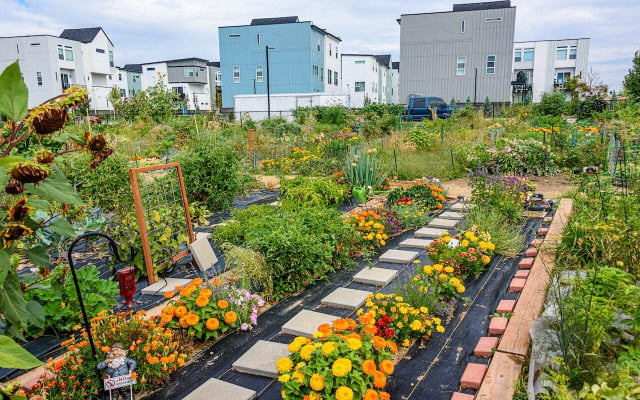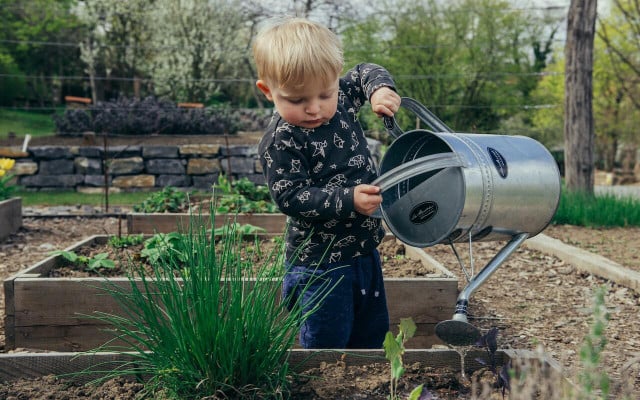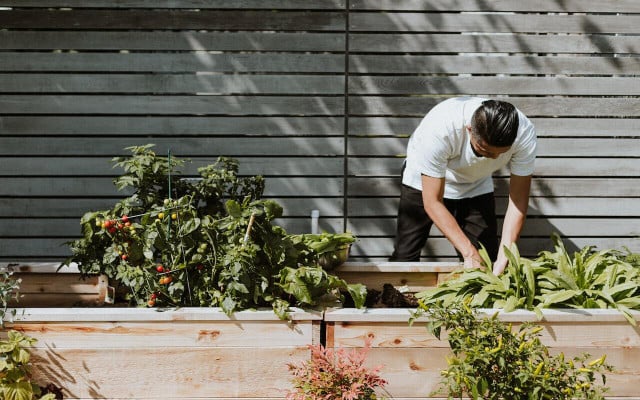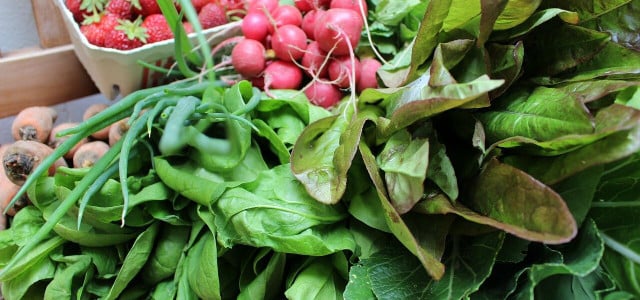A community garden is more than just a place to grow plants, it can help foster and build beneficial relationships. Keep reading to learn how to start a community garden, as well as why you should.
A community garden is a shared space where people from the community can go and share the work and harvest of various flowers, herbs, vegetables, and fruits. The beauty of community gardens is that no two look alike. It starts with a basic idea, and grows organically to be what each individual community needs. It’s a great hub of activity and can help bring like-minded people together.
Why Start a Community Garden?



(Foto: CC0 / Unsplash / Steve Adams )
There is no right or wrong reason to start a community garden, though some common reasons include:
- beautifying the landscape
- making fresh produce available to those who don’t have easy access to it
- gaining access to outdoor space for those who live in apartments
- wanting to spend more time outdoors
- cleaning up the environment
If it’s something you’re interested in, take the steps to do it. We’ve outlined how to start a community garden below.
Starting a Community Garden



(Foto: CC0 / Unsplash / Hannah Busing)
The first, and often hardest thing to do, is to generate enough interest in the project. It takes a lot of people to get a community garden up and running, and requires people of all backgrounds. You’ll want to look to recruit people to:
- take leadership roles
- build the garden
- be long term gardeners and
- donate money or supplies
You can do this by using social media to your advantage, putting flyers up in community centers, go door-to-door, and ask people you know. If those methods aren’t getting you anywhere, go to pre-formed communities like churches, PTAs, and neighborhood councils to let them know what you want to accomplish, and see if they can help. Once you’ve generated enough interest, you can use the following steps to start a community garden.
How to Start a Community Garden



(Foto: CC0 / Unsplash / Filip Urban)
When you break it down into manageable tasks, starting a community garden can be quite simple.
- Form a planning committee: Having people in charge of the venture is a crucial step when it comes to starting a community garden. Everyone will have different ideas and wishes, so it’s best to identify those who wish to take on a leadership role.
- Consider resources: If you’ve never done anything like this before, it’s worth going out into the community to ask for help. Find a local gardening club and ask for their expertise, or visit local gardening centers for advice.
- Connect with a sponsor: Starting a community garden takes funding, so ask around for donations or consider connecting with local businesses for sponsorship.
- Find a location: In certain areas, the local governments will allow you to use public land, and in others, you may need to lease the space. Things to consider when looking for a location include soil quality, sun exposure, water availability, and accessibility.
- Prepare and develop the site: Once you’ve selected the site, it’s time to get to work. You will need plenty of manpower to help prepare the site, gather materials, and get things organized.
- Map out the site: This is where the planning committee comes into action. Determine how many plots you’d like to have, how they will be organized, and assign them to people.
- Determine the rules: Coming up with basic ground rules (and putting them in writing) gives all gardeners a rough guideline for what’s expected from them.
- Enable members to keep in contact: Communication is an important part of a community garden, so make it easier for your members by either making a page on social media, adding everyone to an email list, or by installing a waterproof bulletin board somewhere on the premises for important updates.
Community Garden Benefits



(Foto: CC0 / Unsplash / Maarten van den Heuvel)
There’s a reason community gardens have increased in popularity over the last several decades. Some benefits include:
Environmental Benefits:
- plants help create oxygen and remove air pollution
- plants absorb rainwater meaning there is less runoff in the streets and less pollution being washed into the water system
- community garden create shorter food to table routes
- compost from leaves and dying plants can be turned into fertilizer for new growth
- certain flowers will improve conditions for insects like bees by giving them additional food sources
Societal and Health Benefits:
- community members will gain access to fresh, homegrown, local produce
- community gardens better your community and bring people together, which helps keep loneliness at bay
- spending more time outdoors helps relieve stress
- community projects create a sense of unity and common ground
Educational Benefits:
- community gardens reconnect people with the growing process
- they teach younger generations about the value of hard work and patience
- like-minded people can exchange knowledge and learn new gardening techniques
Potential Obstacles



(Foto: CC0 / Unsplash / Priscilla Du Preez)
It may seem like a simple process, but sometimes, starting a community garden doesn’t go according to plan. You may hit a delay in your planning, or get caught up in some red tape. Knowing what potential obstacles you might need to overcome ahead of time can hep make planning a bit easier. The biggest potential obstacles are:
- Getting the approval to start your community garden
- Securing proper funding
- Finding an adequate location
- Deciding which fruits, vegetables, and plants you wish to grow
- Security
- Getting children interested in the project
Each obstacle can be overcome with the right support. Appeal to community members that are part of city council to help get approval, or speak to local schools about getting children involved in the project. Be open and honest with the struggles you’re experiencing. Many people have additional resources that they don’t offer up until they know they’re needed.
Tip: Learn about crop rotation and how to leverage its benefits in your community garden to minimize damage from insect pests and to help you manage soil fertility.
Happy planting!
Read more:
- Companion Planting: A Beginners Guide
- Native Gardening for Wildlife: Benefits and Tips for Beginners
- What Is Guerrilla Gardening?
Do you like this post?










